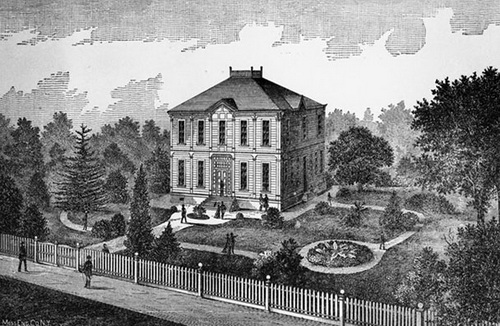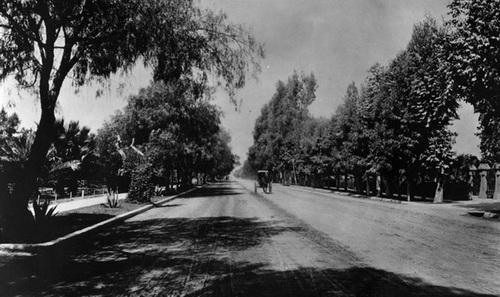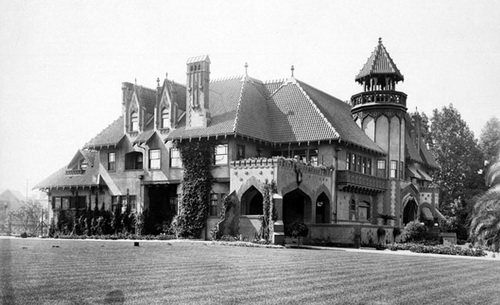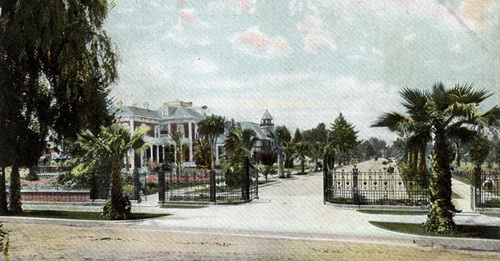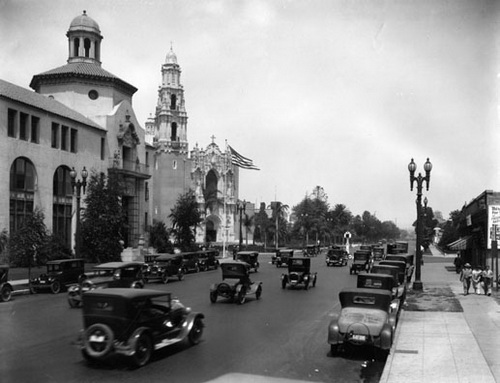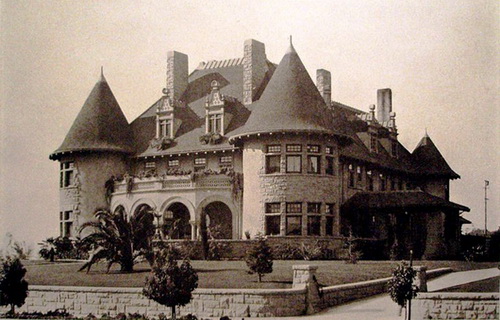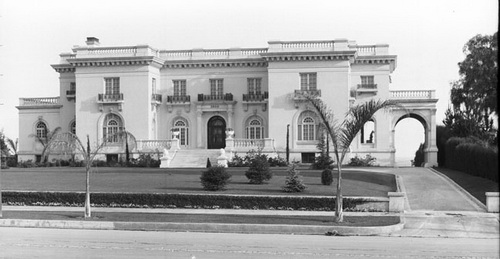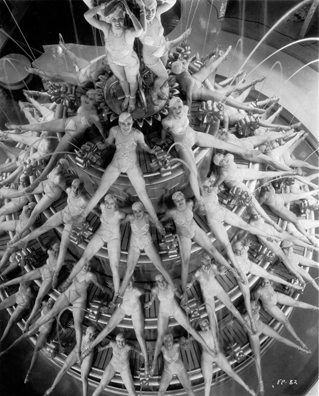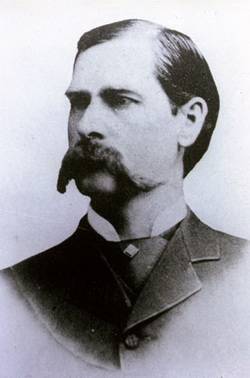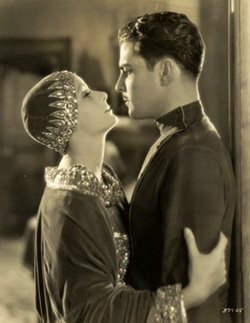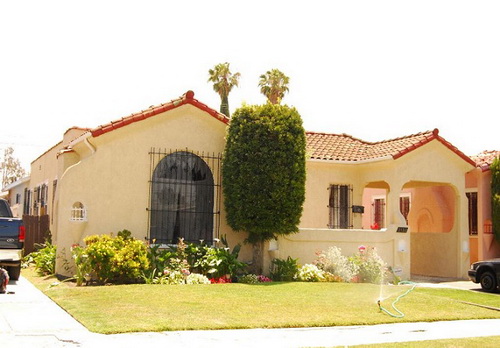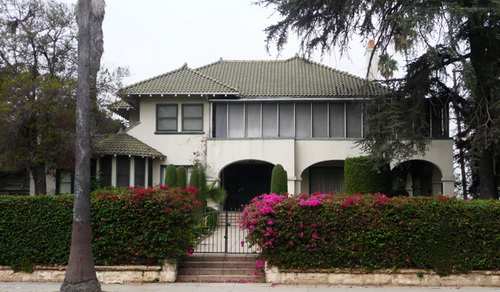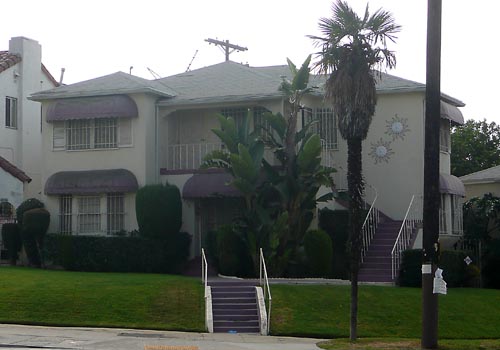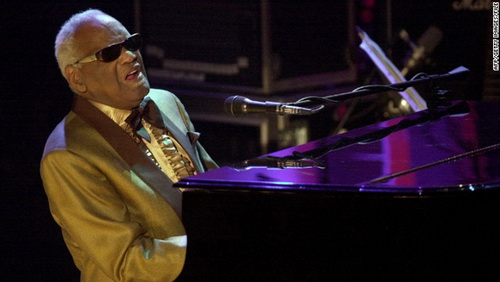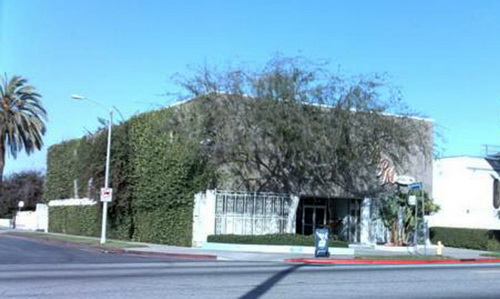Bygone Days in West Adams
Leslie Evans
My wife Jennifer and I have lived in the old West Adams section of Los Angeles, not far from the University of Southern California, for almost twenty-five years. Once, from the 1880s through World War I, this was a prized neighborhood for the affluent. It faded when Beverly Hills was opened in 1917. Despite the hundreds of architect-designed mansions, the area decayed in the Depression, when many of the grand old homes were cut up into boarding houses, with heavy-duty locks cut into the bedroom doors. When, in Shelley v. Kramer in 1948, the U.S. Supreme Court outlawed racial housing covenants, the area turned mostly black. The Santa Monica 10 Freeway was the white bureaucracy’s revenge. Its route was chosen to slash its way through the center of the most concentrated stretch of historic two-story mansions, the pride of the black middle class. Thereafter the freeway marked the dividing line between L.A. proper and the feared South Central. In the 1990s Latino immigration again transformed West Adams, as Spanish-speakers became the plurality ethnicity.
A fascinating succession of people have lived in my neighborhood, from the early days when the city was wide open and it was still possible to rise from total poverty to become vastly wealthy, through the generations, first white, then more diverse, down to our own day. What follows is adapted from a talk I gave on November 13, 2012, on our local history and architecture to the West Adams Avenues neighborhood association in the western end of West Adams. Many of the more famous figures in West Adams history were based at the eastern end, around the intersection of Figueroa Street and Adams Blvd. I had to include a few of those, while omitting many others, to explain something about how West Adams came into being, but I concentrated on the blocks where my audience lived, between Arlington Avenue and Crenshaw, mostly just south of the 10 Freeway.
The talk consisted of very brief sketches of some of these interesting people along with their photos and pictures of a few of their streets and homes.
Judge Robert Maclay Widney (1838-1929)
 Born in Piqua, Ohio, Widney left home at sixteen to wander for two years around the Rocky mountains with his rifle and backpack. He came to California in 1857, went to college, and became a mathematics professor. He moved to Los Angeles in 1867, where he opened the city’s first real estate office, took a law degree, and became a judge. In 1871 in a gun fight between two Chinese a Caucasian was accidentally killed. This touched off a lynch mob of whites and Latinos who looted every building in Chinatown and murdered nineteen Chinese. Judge Widney showed up, sent for his pistol, and helped save the other Chinese and stop the riot.
Born in Piqua, Ohio, Widney left home at sixteen to wander for two years around the Rocky mountains with his rifle and backpack. He came to California in 1857, went to college, and became a mathematics professor. He moved to Los Angeles in 1867, where he opened the city’s first real estate office, took a law degree, and became a judge. In 1871 in a gun fight between two Chinese a Caucasian was accidentally killed. This touched off a lynch mob of whites and Latinos who looted every building in Chinatown and murdered nineteen Chinese. Judge Widney showed up, sent for his pistol, and helped save the other Chinese and stop the riot.
In 1871 Judge Widney became the central founder of USC. He got the land donated, wrote the articles of incorporation, and donated $100,000 ($2.3 million in today’s dollars). USC opened in 1880 with 53 students and 10 professors. Its first building was Widney Hall, still in use today.
Edward Doheny (1856-1935)
 Born in Wisconsin, Doheny spent years as a drifter, prospector, fruit packer, singing waiter, and gunslinger in Mexico, New Mexico, and Texas. He came to Los Angeles in 1892 dead broke with his first wife and an ill daughter, who died at seven. They were living in a boarding house where they hadn’t paid the rent when he saw a wagon driver near Westlake Park with a load of caked oil. Doheny borrowed $400 to lease a few empty lots and began digging with a sharpened tree trunk. He struck oil and soon became a millionaire.
Born in Wisconsin, Doheny spent years as a drifter, prospector, fruit packer, singing waiter, and gunslinger in Mexico, New Mexico, and Texas. He came to Los Angeles in 1892 dead broke with his first wife and an ill daughter, who died at seven. They were living in a boarding house where they hadn’t paid the rent when he saw a wagon driver near Westlake Park with a load of caked oil. Doheny borrowed $400 to lease a few empty lots and began digging with a sharpened tree trunk. He struck oil and soon became a millionaire.
In 1901 he moved to West Adams where he bought a palatial home at Adams and Figueroa and developed a private park on Chester Place. This is now Mt. St. Mary’s College. He made an even bigger fortune on oil in Mexico, where he built railroads and whole cities and had his own private army. He became the richest man in America.
In 1921 he and a partner sent suitcases of money to Washington to bribe the Secretary of the Interior to lease them government oil land. They were all arrested in the famous Teapot Dome scandal. To try to buy back his respectability Doheny built the beautiful St. Vincent De Paul Catholic Church at the corner of Adams and Figueroa. He never served jail time.
In February 1929 at Greystone, a home in Beverly Hills Doheny had built for his son Ned, Ned and his male secretary were shot dead. The family moved the bodies and hid evidence so the true circumstances of the killings were never known.
Caroline Severance (1820-1914)
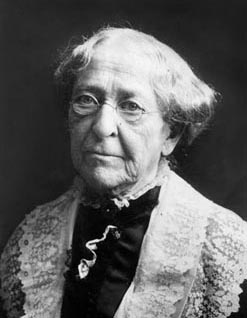 A famous Abolitionist before the Civil War, Caroline Severance was a leader of the Boston Anti-Slavery Society. Born in upstate New York, she fought slavery, was a crusader for women’s rights, and was a religious free thinker. She was a founder in 1866 of the Equal Rights Association with Susan B. Anthony. She and her husband moved to Los Angeles in 1875, where she helped create the city’s system of public libraries, was a founder of the Los Angeles Philharmonic, helped to found UCLA, and worked to find homes for orphans. She had a home at 806 W. Adams Blvd. It is now the site of the John Tracy Clinic, devoted to helping deaf children, founded in 1942 by Spencer Tracy and his wife Louise to honor their deaf son John Tracy.
A famous Abolitionist before the Civil War, Caroline Severance was a leader of the Boston Anti-Slavery Society. Born in upstate New York, she fought slavery, was a crusader for women’s rights, and was a religious free thinker. She was a founder in 1866 of the Equal Rights Association with Susan B. Anthony. She and her husband moved to Los Angeles in 1875, where she helped create the city’s system of public libraries, was a founder of the Los Angeles Philharmonic, helped to found UCLA, and worked to find homes for orphans. She had a home at 806 W. Adams Blvd. It is now the site of the John Tracy Clinic, devoted to helping deaf children, founded in 1942 by Spencer Tracy and his wife Louise to honor their deaf son John Tracy.
Frederick H. Rindge (1857-1905)
Rindge was born to wealthy parents in Cambridge, Massachusetts. In his youth he traveled in Europe and America and for a while owned a sheep ranch in Colorado. He moved to Los Angeles in 1887. He founded a life insurance company, became a vice president of Union Oil, and was a director of the Edison Company. He owned a 17,000 acre ranch that included most of what is today Malibu and Topanga Canyon.
Iin 1903 he built the beautiful French Chateau mansion at 2263 S. Harvard Blvd., across the street from the First AME Church, but was only able to live in it for two years before he died at the age of forty-eight.
James Taber Fitzgerald (1864-1956)

Fitzgerald came to Los Angeles in 1891, and ran a successful piano store in downtown Los Angeles. He is best remembered in West Adams as the builder in 1903 of one of our landmark houses, the 6,665 square foot Italian Gothic mansion at 3115 W. Adams Blvd., known as the Elegant Manor. By 1910 Fitzgerald and his wife had moved to Pasadena. It was owned after that successively by a part owner of a clothing store and a former opera singer who ran a downtown liquor store. In 1952 it was purchased as a clubhouse by a group of women circus performers who called themselves the Regular Associated Troupers. In 1977 the Troupers sold the house to Arlillian Moody, daughter of a Louisiana sharecropper. Ms. Moody was a fine dressmaker who moved her business into the big old house. She also rented it out for marriages and upscale parties for the black community. Ms. Moody died in 2001 and the house passed to her son Ronald Carroll. It fell into disrepair. Carroll became a hoarder of junk vehicles, that filled the large three-lot yard. The wedding business fell off and Mr. Carroll began renting the house to street gangs for parties. In January 2004 during a party by the Black P-Stone gang, a young Latino brother and sister who asked to attend were robbed and murdered on the front steps. A zoning hearing that April revoked the Elegant Manor’s conditional use permits to hold public events. In October 2004 the city removed thirty-three inoperable vehicles and twenty tons of trash from the property. Ronald Carroll eventually lost the house for nonpayment of debts. It has been empty since and has been on the market for several years.
Secundo Guasti (1859-1927)
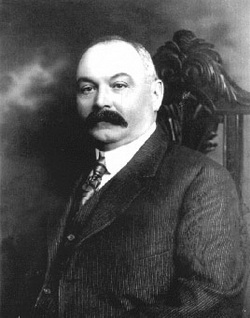 Guasti was a farm laborer in Italy. He came to Los Angeles when he was nineteen, in 1878, and got a job as a cook in an Italian restaurant. He married the owner’s daughter, and they explored the desert together near Cucamonga. They found water not far under the surface. In 1901 Guasti bought 5,000 acres of land for $3,750. He planted grapes and soon had the largest winery in California. He built a company town called Guasti and imported wine workers from Italy. In 1910 he built the Italianate Guasti Villa at 3500 W. Adams Blvd.
Guasti was a farm laborer in Italy. He came to Los Angeles when he was nineteen, in 1878, and got a job as a cook in an Italian restaurant. He married the owner’s daughter, and they explored the desert together near Cucamonga. They found water not far under the surface. In 1901 Guasti bought 5,000 acres of land for $3,750. He planted grapes and soon had the largest winery in California. He built a company town called Guasti and imported wine workers from Italy. In 1910 he built the Italianate Guasti Villa at 3500 W. Adams Blvd.
In 1903 a locomotive derailed and plowed into the Guasti vineyard, killing thirty-two men. The place got a reputation as haunted, and for a few years until 2005 a house at the winery site was a tourist attraction called the Haunted Vineyard.
Busby Berkeley (1895-1976)
 After Secundo Guasti’s death his family sold his Adams Blvd. home to Hollywood choreographer Busby Berkeley. Born in Los Angeles – his real name was William Berkeley Enos – he served in World War I, where he staged camp shows for soldiers. He broke into big time stage shows as dance director for Florence Ziegfeld’s production of “A Connecticut Yankee in King Arthur’s Court.” From there he became a dance director in the movies. He was the first choreographer to insist that he should control the cameras during a dance sequence. He became famous for fantastically elaborate dance routines using as many as 150 dancers. His heyday was between 1933 and the early 1940s. He was an alcoholic and was tried for murder in 1935 for driving drunk and killing someone on the Pacific Coast Highway. Since 1977 the Adams Blvd. mansion has been the headquarters of the Peace Theological Seminary and College of Philosophy, founded by New Age mystic John-Roger Hinkins.
After Secundo Guasti’s death his family sold his Adams Blvd. home to Hollywood choreographer Busby Berkeley. Born in Los Angeles – his real name was William Berkeley Enos – he served in World War I, where he staged camp shows for soldiers. He broke into big time stage shows as dance director for Florence Ziegfeld’s production of “A Connecticut Yankee in King Arthur’s Court.” From there he became a dance director in the movies. He was the first choreographer to insist that he should control the cameras during a dance sequence. He became famous for fantastically elaborate dance routines using as many as 150 dancers. His heyday was between 1933 and the early 1940s. He was an alcoholic and was tried for murder in 1935 for driving drunk and killing someone on the Pacific Coast Highway. Since 1977 the Adams Blvd. mansion has been the headquarters of the Peace Theological Seminary and College of Philosophy, founded by New Age mystic John-Roger Hinkins.
Wyatt Earp (1848-1929)
One of West Adams’ most famous and colorful residents was the famed Western lawman Wyatt Earp and his wife Josephine Sarah Marcus. He and his brothers, Virgil and Morgan, along with Doc Holliday went into history as the winners of the gunfight at the OK Corral in Tombstone, Arizona, in October 1881. The Earps were enforcing a city ordinance prohibiting carrying guns in town. They shot and killed Billy Clanton, and Tom and Frank McLaury. Morgan Earp was later murdered by one of the Clanton gang. In later years Wyatt and Josephine mined gold in Arizona, lived in San Diego and San Francisco, and made a fortune running a saloon in Alaska during the gold rush at the end of the 1890s. They settled in Los Angeles in 1901. In the winters they worked mining claims in the Mojave Desert, and spent the summers in Los Angles. The last place they lived was a bungalow at 4004 West 17th Street, between Arlington and Crenshaw and Venice and Washington Blvd. It was demolished to build the Mount Vernon Junior High School, which is today the Johnny Cochran Middle School. One long-time resident tells me that the bungalow was actually moved to a nearby street and still exists but I have been unable to trace it.
Ramon Novarro (1899-1968)

Heart-throb of the silent movies, he was born in Mexico and his real name was Ramon Gil Samaniego. His family moved to Los Angeles in 1914. He became an actor in little theater, then in silent movies. His first big role was as Rupert of Hentzau in “The Prisoner of Zenda” in 1922, where he was still credited as Ramon Samaniegos (misspelled). For his next film, “Trifling Women, the third of his credited films, also in 1922,” the studio decided to rename him to the simpler Navarro. A secretary misspelled that and he became Ramon Novarro ever after. His breakthrough role was in “Scaramouche” the next year. He made eighteen films. The most famous was the silent version of Ben-Hur in 1925. He bought a house in West Adams at 2265 W. 22nd Street, just east of Western Avenue and just south of the 10 Freeway. It has since been demolished. He made a few successful sound films, particularly Mata Hari, with Greta Garbo in 1932, but his career faded by the mid-1930s. He had roles on television in the 1950s and 1960s. Novarro was discreetly gay, and was murdered in 1968 by two brothers he had brought to his house, then in Laurel Canyon. They tortured him to death trying to get him to reveal the location of a nonexistent fortune they had heard was hidden in the house.
Bessie Bruington Burke (1891-1968)
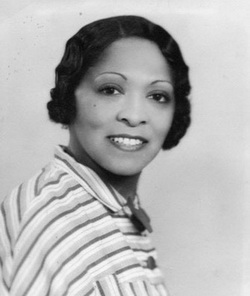 Her parents came to Los Angeles from Kansas in a covered wagon in 1877. She attended Los Angeles State Normal School, a teacher college later incorporated into UCLA. In 1911 she was the first African American teacher in the Los Angeles school system, at the 51st Street elementary school (today the Holmes Avenue school). 1918, she became the school’s principal, again the first African American to hold such a post in Los Angeles. She was a leading figure in the Wilfandel Club and active in the Los Angeles NAACP. Her last school as principal before she retired in 1955 was in West Adams at the Virginia Road Elementary School, 2925 Virginia Road.
Her parents came to Los Angeles from Kansas in a covered wagon in 1877. She attended Los Angeles State Normal School, a teacher college later incorporated into UCLA. In 1911 she was the first African American teacher in the Los Angeles school system, at the 51st Street elementary school (today the Holmes Avenue school). 1918, she became the school’s principal, again the first African American to hold such a post in Los Angeles. She was a leading figure in the Wilfandel Club and active in the Los Angeles NAACP. Her last school as principal before she retired in 1955 was in West Adams at the Virginia Road Elementary School, 2925 Virginia Road.

Virginia Road Elementary School, 2925 Virginia Road, class of 1954. Principal Bessie Bruington Burke on left.
The Wilfandel Club
The Wilfandel Club, at 3425 W. Adams Blvd., is the oldest African American women’s club in Los Angeles. It was founded in 1945 by Della Williams and Fannie Williams, and has held monthly meetings there ever since. The club raises funds for many charitable causes. The clubhouse is regularly opened to many community groups, and is rented out for weddings and receptions. My November 13 talk to the West Adams Avenues group was given there. Some mystery surrounds the house’s origins. The Wilfandel Club website as well as the Wikipedia state that the house was built by Ramon Novarro in 1922 for his brother. I repeated this in my talk. Afterward one of the club members told me she had always heard that the house was older. I checked the Los Angeles Zone Information Map Access System (ZIMAS), which gave the construction date as 1912. Ramon Novarro was a child of thirteen in Mexico in 1912. He was just established in Hollywood in 1922, and perhaps he purchased the house. He was one of thirteen children and had five brothers.
Charles Bukowski (1920-1992)
 Heavy drinking poet and novelist, Bukowski was born in Germany to a German mother and American serviceman father. The family moved to Los Angeles in 1923. They lived for some years in a house on Virginia Road in the Jefferson Park section of West Adams. He attended Virginia Road elementary school and Mt. Vernon Jr. High. He lived at 2122 S. Longwood Ave. (between Crenshaw and La Brea and Adams and Washington Blvd., slightly west of the West Adams area) from 1931 to 1939. He spent ten years drifting around the United States, returning to Los Angeles in the early 1950s where he worked in the post office. He began to publish his poetry. He wrote a column called “Notes of a Dirty Old Man” for the L.A. Free Press.
Heavy drinking poet and novelist, Bukowski was born in Germany to a German mother and American serviceman father. The family moved to Los Angeles in 1923. They lived for some years in a house on Virginia Road in the Jefferson Park section of West Adams. He attended Virginia Road elementary school and Mt. Vernon Jr. High. He lived at 2122 S. Longwood Ave. (between Crenshaw and La Brea and Adams and Washington Blvd., slightly west of the West Adams area) from 1931 to 1939. He spent ten years drifting around the United States, returning to Los Angeles in the early 1950s where he worked in the post office. He began to publish his poetry. He wrote a column called “Notes of a Dirty Old Man” for the L.A. Free Press.
Bukowski published six novels, of which the first, “Post Office” (1971) is considered the best., as well as more than forty books of his poetry and hundreds of short stories. One critic described his work as a “detailed depiction of . . . the uninhibited bachelor, slobby, anti-social, and utterly free.”
Hattie McDaniel (1895-1952)
 She was the first African American film star to win an Oscar, for her role in “Gone With the Wind” (1939). Born in Wichita, Kansas, her father was a freed slave. She dropped out of school at fifteen to become a singer in a minstrel show. At twenty she was a singer with a traveling orchestra. She became a star in vaudeville and had high billing in major theatres until the end of the 1920s when vaudeville collapsed. She moved to Los Angeles in 1931 where she became the star of a local radio show. She got her first film role, as a maid, in the 1932 film “The Golden West.” She was typecast by racist attitudes, and mostly played maids after that. When criticized for this by radical blacks she retorted, “I’d rather play a maid than be one.” Her movie maids were not deferential to their employers but strong characters who frequently talked back. In many films she had important singing parts, as Queenie in “Showboat,” and in duets with Will Rogers and Clark Gable. In the 1940s she starred in the radio show “Beaulah,” and in the first few episodes of the television version before her final illness. She led the campaign to abolish racial real estate covenants in Los Angeles that won their reversal in 1948. Her home after that was at 2203 S. Harvard Blvd., just east of Western Avenue and just south of what is now the 10 Freeway.
She was the first African American film star to win an Oscar, for her role in “Gone With the Wind” (1939). Born in Wichita, Kansas, her father was a freed slave. She dropped out of school at fifteen to become a singer in a minstrel show. At twenty she was a singer with a traveling orchestra. She became a star in vaudeville and had high billing in major theatres until the end of the 1920s when vaudeville collapsed. She moved to Los Angeles in 1931 where she became the star of a local radio show. She got her first film role, as a maid, in the 1932 film “The Golden West.” She was typecast by racist attitudes, and mostly played maids after that. When criticized for this by radical blacks she retorted, “I’d rather play a maid than be one.” Her movie maids were not deferential to their employers but strong characters who frequently talked back. In many films she had important singing parts, as Queenie in “Showboat,” and in duets with Will Rogers and Clark Gable. In the 1940s she starred in the radio show “Beaulah,” and in the first few episodes of the television version before her final illness. She led the campaign to abolish racial real estate covenants in Los Angeles that won their reversal in 1948. Her home after that was at 2203 S. Harvard Blvd., just east of Western Avenue and just south of what is now the 10 Freeway.
General Hilario Moncado (1898-1956)
This is a name little known in America but famous in the Philippines. Hilario Moncado was born in Cebu province in the Philippines. His father was a Spanish Monsignor, Fermin del Prado. Hilario was sent to school in India at the age of six, and graduated at nine from the College of Mystery and Psychics in Calcutta. He published his first book at thirteen, and claimed to be fluent in eleven languages. He lived in Los Angeles where he founded a magazine, “The Filipino Nation,” in 1924. The United States ruled the Philippines from 1902 to 1935. It granted the islands commonwealth status in 1935. Moncado was a delegate from Cebu to the 1935 Constitutional Convention and was commissioned Brigadier General in the new Philippine army. He founded a religious sect called the Filipino Crusaders World Army, sometimes called the Moncadistas, which advocates raw food and vegetarianism. To this day he has loyal followers in the Philippines. He spent most of his life here in Los Angeles, at his home and headquarters at 2302 W. 25th Street, at the corner of Arlington. This house is best known as the set for Fisher and Sons Mortuary in the HBO series “Six Feet Under.”
Joe Louis (1914-1981)
World boxing champion, 1937-1949, he was born Joseph Louis Barrow in Lexington, Alabama. His father died when Joe was four. His mother remarried and moved to Detroit. He studied cabinet making and worked in an auto plant when he took up amateur boxing. He won 50 of 54 amateur bouts and decided to go professional in 1934. He won his first 68 professional fights. His first defeat was in a match with Germany’s Max Schmelling in 1936. Louis won the world championship the next year. Louis in a rematch with Schmelling in June 1939. He met with President Roosevelt before the match, while Schmelling got a personal phone call from Adolph Hitler. Louis knocked Schmelling out in the first two minutes and four seconds of the match. He served in the Army in a segregated unit in World War II, and retired from boxing in 1948. He had a home in the Lafayette Square section of West Adams, but spent much of his time in Las Vegas. He earned some $4.6 million during his boxing career but his managers got most of it. His portion was only $800,000. He was generous to family members and started several businesses that failed, leaving hin with a large and ever growing tax debt due to interest to the IRS. Max Schmelling, who was never a Nazi, sent Louis money in his later years and served as a pall bearer at Joe Louis’s funeral.
Sugar Ray Robinson (1921-1989)
 World welterweight boxing champion, he also held the world middleweight title five times. The Associated Press in 1999 named him the greatest boxer of the century in both weight classes. Robinson was born in Detroit. His original name was Walker Smith, Jr. His mother divorced and took her children to New York, where he joined an athletic club. Because he was underage for an amateur match he entered the contest using an older boy’s ID, Ray Robinson. He kept the name afterward. He won 85 straight fights, and Sugar was added to the name. He went professional in 1940. He retired from the ring in 1952. He had fought 137 matches and been defeated only three times. Robinson then became a tap dancer and worked at high wages in Las Vegas and Europe. He returned to the ring in the 1950s where he won and lost the middleweight title several times, retiring for good in 1965. He moved to Los Angeles in 1965 with his third wife, Millie Bruce. They lived in the top story of a two story duplex at the corner of 10th Avenue and Adams Blvd.. I had photographed the corner I thought most likely, as I could not find any online verification of Robinson’s address. It turned out that the building I had chosen was the right one. Two members of my audience were old enough and had lived in the neighborhood long enough that they knew Sugar Ray and Millie Bruce and confirmed the house. The duplex was owned by Millie Bruce’s uncle, Wright Fillmore, a head waiter on the Southern Pacific Railroad. Fillmore and his wife Babe lived in the downstairs, at 3930 West Adams Blvd., while Sugar Ray and Millie lived upstairs at 3932.
World welterweight boxing champion, he also held the world middleweight title five times. The Associated Press in 1999 named him the greatest boxer of the century in both weight classes. Robinson was born in Detroit. His original name was Walker Smith, Jr. His mother divorced and took her children to New York, where he joined an athletic club. Because he was underage for an amateur match he entered the contest using an older boy’s ID, Ray Robinson. He kept the name afterward. He won 85 straight fights, and Sugar was added to the name. He went professional in 1940. He retired from the ring in 1952. He had fought 137 matches and been defeated only three times. Robinson then became a tap dancer and worked at high wages in Las Vegas and Europe. He returned to the ring in the 1950s where he won and lost the middleweight title several times, retiring for good in 1965. He moved to Los Angeles in 1965 with his third wife, Millie Bruce. They lived in the top story of a two story duplex at the corner of 10th Avenue and Adams Blvd.. I had photographed the corner I thought most likely, as I could not find any online verification of Robinson’s address. It turned out that the building I had chosen was the right one. Two members of my audience were old enough and had lived in the neighborhood long enough that they knew Sugar Ray and Millie Bruce and confirmed the house. The duplex was owned by Millie Bruce’s uncle, Wright Fillmore, a head waiter on the Southern Pacific Railroad. Fillmore and his wife Babe lived in the downstairs, at 3930 West Adams Blvd., while Sugar Ray and Millie lived upstairs at 3932.
Ray Charles (1930-2004)
His original name was Ray Charles Robinson. He changed it so as not to be confused with Sugar Ray Robinson. He was born to a poor family in Albany, Georgia, and raised in Greenville, Florida. He went blind at the age of seven from glaucoma. He attended a school for the deaf and blind where he trained in classical music. He taught himself jazz and played with Cannonball Adderly. His mother died when he was fifteen and he went on the road. In Seattle he started making records. Signing with Atlantic Records he had a number-one hit in 1955 with his “I Got a Woman.” His style was a mixture of gospel, jazz, and blues, and had a major influence on rock and roll. In the sixties he added country music to his mix. In the 1980s he recorded “Seven Spanish Angels” with Willie Nelson. He performed at Ronald Reagan’s second inaugural and Bill Clinton’s first inaugural. Ray Charles maintained his own recording studio, in West Adams, at 2107 W. Washington Blvd., between Normandie and Western Avenue.

